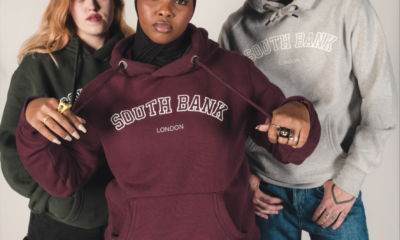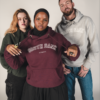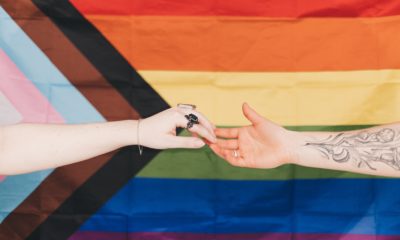Culture
“A smaller fat” – Plus size expenditure has grown by £800m
The change from exclusivity to inclusivity- but how far has the fashion industry expanded to fit everyone’s waist line?
Walking down the stairs of Jaks on Kings Road I immediately felt relieved that I had opted for a smart casual look today. I was surrounded by antique pieces of furniture while business men in crisp suits perched on 100% real leather sofas as they discussed the stock market and god knows what else. I felt slightly out of place, until I heard a warm voice call my name. I looked to the bar to see lifestyle blogger Chloe Pierre dressed casually and beckoning me over. She immediately grabbed my hand and led me to a leather sofa where we sat and discussed the industry she had grown her life from while it grew around her.
According to GlobalData since 2012 plus size expenditure has grown by £800m as, according to the NHS Health Survey for England, 26.8% of females have become obese since 2015. With the plus size woman becoming an ever-expanding consumer to cater for there is obvious money to be made from designing their clothes, but how inclusive really is the industry? Lifestyle Blogger Chloe admits: “They use smaller plus sized models and I don’t think that’s right, if you’re marketing to a certain person than you need to show it”.
The argument regarding what counts as ‘plus size’ has been debated for several years. With plus size clothing store Evans starting their stocking sizes at a 14, compared to H&M and Marks and Spencer’s not classing anything under a size 16 as ‘plus’ how are clothing stores supposed to know how to market their clothes to the right sized women? No matter if you’re a “smaller fat”, as Chloe has been called before, or a size 32, YouTuber and plus size model Callie Thorpe answered: “We need to make sure we have better fit models and more diverse models to make sure that we’re reaching the plus size consumer in a good way and not doing a one size fits all”.
45% of female shoppers buy their plus size clothing online, which means that the women who model their clothing must show an accurate representation of how the outfit will fit. However, the models showing us our plus size clothing are showing a size 14-18 representation of it, when most garments are stocked up to a size 32. Does this mean that women above a size 18 are supposed to play a game of guess the fit, wait 3-4 working days for their delivery, and if it doesn’t fit just shrug it off send it back while dealing with ill-fitting clothes? No, but that’s the way they are made to feel by the industry.
With plus size clothing being dedicated a small amount of shelf space, if any, in many retail stores, women over a size 12 are constantly being made to feel undermined and unimportant by the fashion industry. There is no doubt that there has been great progress made in the inclusivity of larger women within fashion, but they need to be better represented. The fashion industry has expanded but not enough to fit all of our waistlines.

















